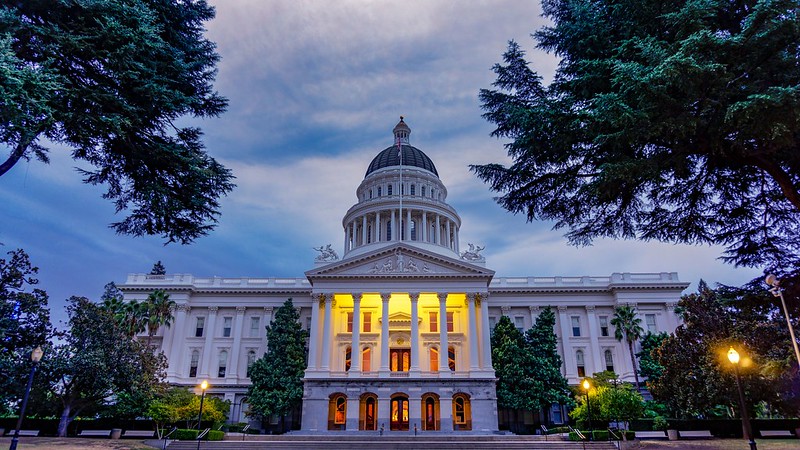
A statewide Fire Threat Map developed by the California Public Utilities Commission (CPUC), identifies the hills on both sides of the Napa Valley as the highest level of fire risk, Tier Three “Extreme.”
Most of the remainder of the county is Tier two, or “Elevated.” CalFire suggests much of the state is experiencing an increase in our fire season of 75 days over the last 10 years largely due to global warming. This risk continues to accelerate, so officials insist that we find solutions and the funding to develop them.
That we are at high risk of wildfires and PG&E’s power shutoffs is not news to Napans. But on Jan. 16, 2020, the CPUC approved new funding that can help keep the lights on, and our courageous public servants working during future power shutoffs. This is good news for Napa Valley if we develop this funding source and take subsequent actions to ensure that first responders and other important goods and service providers to keep working during power outages.
Fires threaten our homes and businesses directly. Fire and smoke inhalation can be devastating. Often overlooked are the ancillary impacts to hospitals, health clinics, homes with medical equipment, fire and police departments, etc., who rely on a consistent power source. Supporting our first responder professionals, we all know, can be a matter of life and death.
As we decarbonize Napa with electric mobility, secure sun fuel sources will be even more important. These additional funds can be used for battery-based solar microgrids, which can provide energy without the need for fossil fuel for hours — or even days — during a crisis. This clean solution will help ensure that our emergency facilities, as well as grocery stores, can remain open during catastrophic and short-term power shutoffs. The Napa Valley does not need to be known as the land of a thousand generators with their noise, pollution and smell.
Extreme Fire Risk
According to the Fire Threat Map from the CPUC (www.cpuc.ca.gov/FireThreatMaps/), the Napa Valley is a Tier 3 “Extreme” fire risk.
California is committed to reducing global climate change emissions, and so is Napa County and our municipalities. Responding to rising concerns expressed by Napa Climate NOW!, the Schools for Climate Change, and other locals, our Board of Supervisors and city council representatives have been conducting a series of meetings to discuss concerns and to initiate a comprehensive action plan for the Valley. As many of our elected officials noted at the most recent meeting on Jan. 8, 2020, we need to take advantage of some short-term opportunities.
The CPUC is providing an opportunity by funding energy projects at facilities deemed critical. This funding is called the “Equity Resiliency Budget” and applies to a variety of facilities, such as police and first responder stations, health care and elder facilities, retail food establishments, homeless shelters and food banks, corrections facilities, and energy, water, wastewater and flood control facilities (see www.cpuc.ca.gov/sgip/).
The California Solar and Storage Association (CALSSA) lobbied for schools to be added to this list, but that was not accepted. Schools may be eligible if designated as a “cooling center” or to provide assistance during a power shutoff, so some of our towns may have funds available for schools. And now, thanks to CALSSA, all of the facilities above can be eligible if they have experienced at least two separate power shutoffs.
For fire stations and other critical first responders, this incentive can be as much as $0.55 per watt hour. What that means is that about 50% of the installed cost of a battery and control systems can be covered by the rebate. With the battery periodically charging and discharging at strategic times, as well as the solar-created savings (both carbon and financial) 365 days a year, these projects are financially viable. The ability to form a grid on-site can also enable existing solar arrays, which shut down during utility grid outages, to continue harvesting energy and producing savings.
There are also funds available for homes and businesses, with the greatest value for homes in low income areas. To obtain these funds, individuals and organizations will have to apply to the Self Generation Incentive Program directed by the CPUC and facilitated by PG&E. Cities, counties and other municipalities will be able to apply for funding, according to the CPUC, no later than April 1, 2020. The funds will be first come, first served, so quick action is critical.
Actions you can take
Getting the word out about these incentives is essential. Now, it is only happening by word of mouth.
– If you have a loved one in a nursing home, a favorite grocery store that has experienced many power shutoffs, or you want your city to get on the ball for first responders, let them know. You might be the only person they hear this from before the funds get gobbled up. This could make our communities a little bit safer.
– Contact your local City Council and county Board of Supervisors. They are working on resilience for the community, but may not be aware of these incentives.
Napa Climate NOW! Is a local non-profit citizen’s group advocating for smart climate solutions based on the latest climate science, part of 350 Bay Area. Find us at Facebook or through https://napa.350bayarea.org/
This article was originally published in the Napa Valley Register here.
